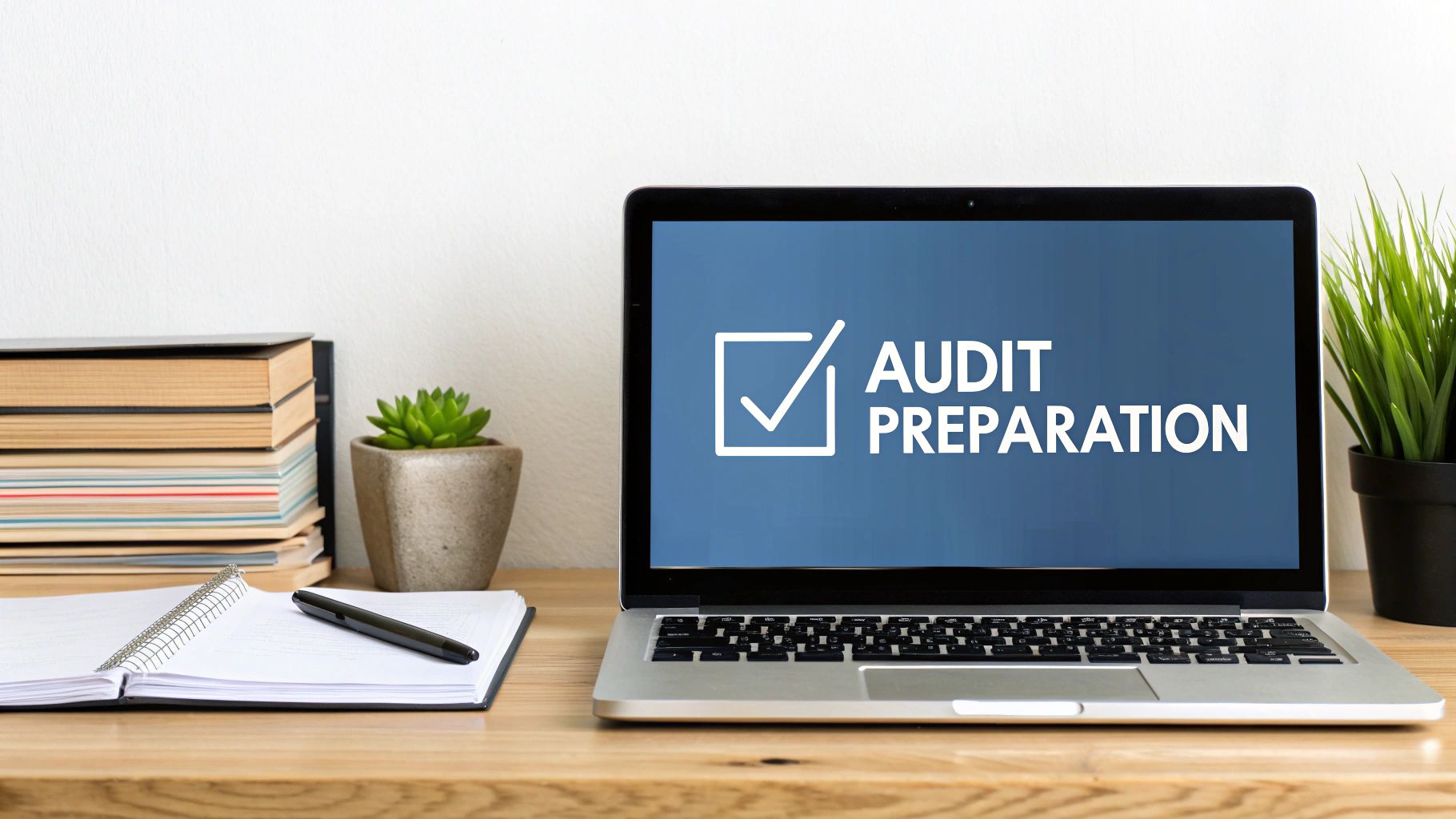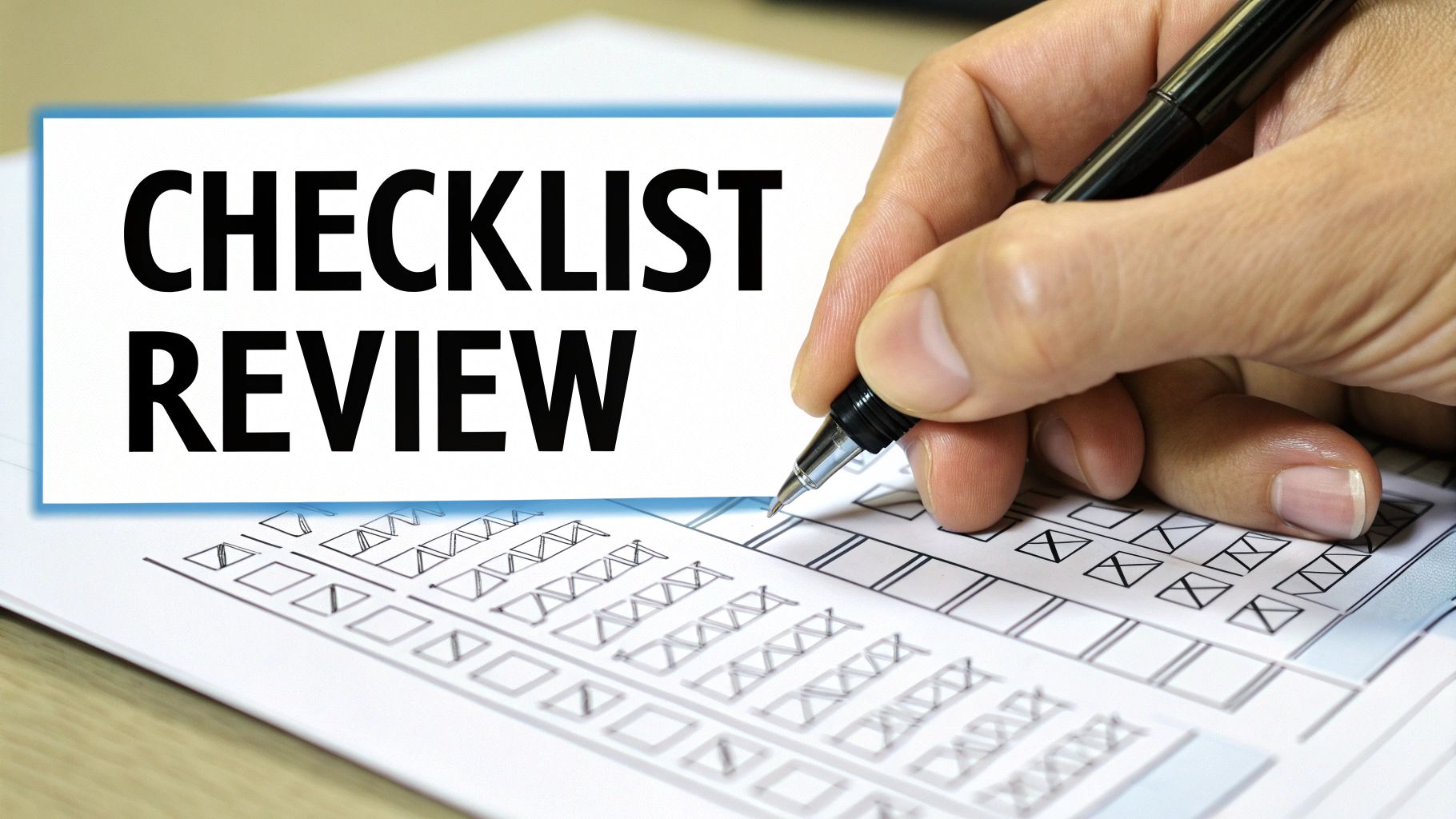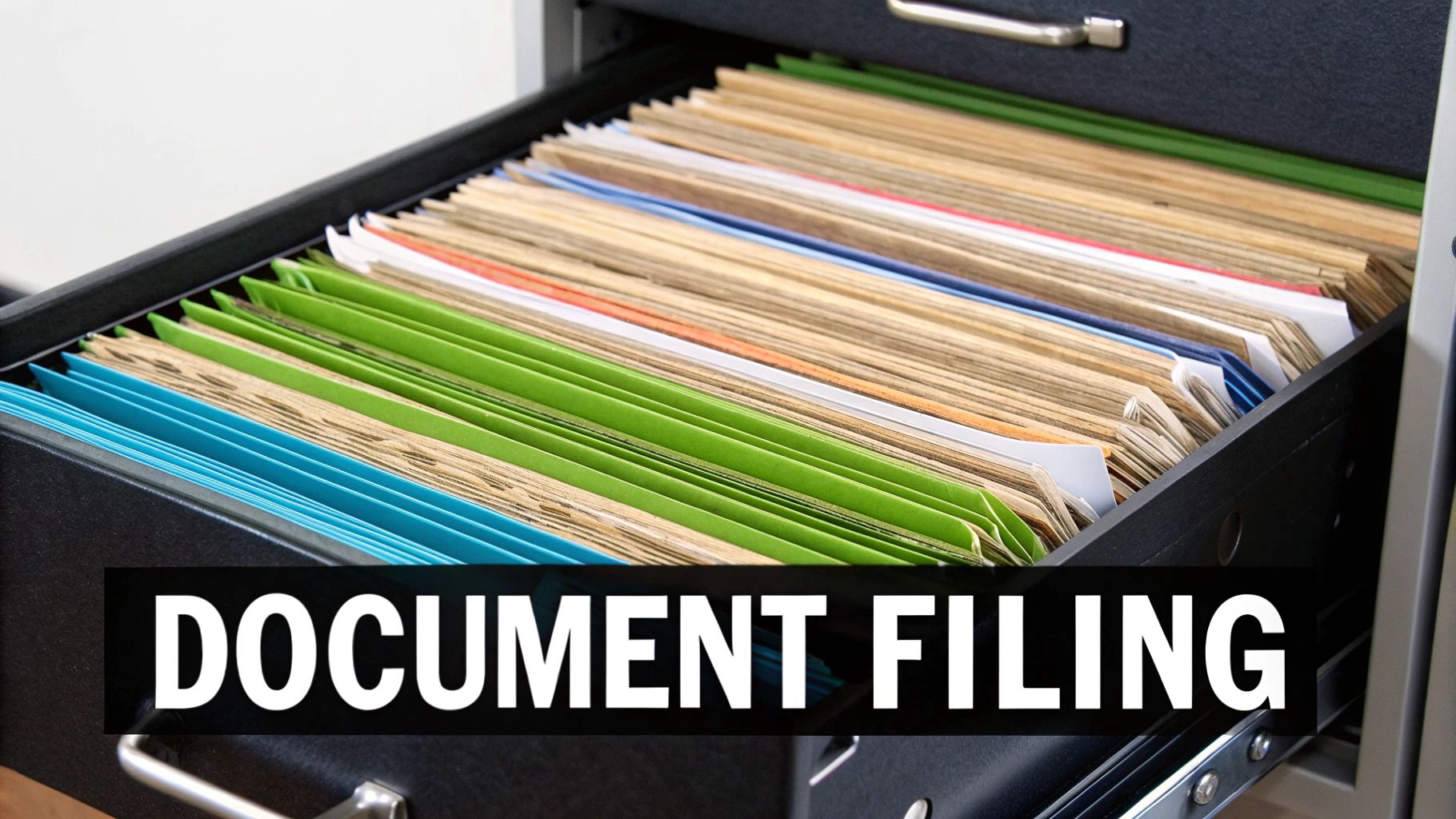The Ultimate Compliance Audit Checklist Template: A Complete Guide for Modern Businesses
Mastering the Power of Strategic Compliance Templates

Companies are improving their compliance processes through structured audit checklist templates. These templates create a clear framework for conducting thorough, consistent audits. Moving beyond scattered, manual approaches helps organizations stay on top of increasingly complex regulations while saving time and resources.
Why Traditional Compliance Approaches Fall Short
Old-school compliance methods often rely on creating new checklists from scratch for each audit. This leads to missed items, inconsistencies between audits, and hours of extra work. Take a large company running audits across multiple departments - without standard templates, each team follows their own process, making it nearly impossible to compare results or ensure consistent compliance standards.
The Advantages of Modern Compliance Templates
Well-designed audit templates streamline compliance work while improving accuracy. They provide a clear structure that works across different types of audits and regulatory requirements. This helps auditors spend less time on paperwork and more time on analysis and planning.
A recent study by the U.S. Department of Energy found that using standardized audit templates makes data collection and validation much more reliable. This matters as Building Performance Standards become more common and require detailed compliance documentation. The DOE's template includes five key reporting sections that help standardize audits and reduce errors. Organizations using these templates have seen efficiency gains of up to 30% while better managing compliance risks.
Practical Tips for Selecting and Customizing Templates
When choosing a compliance audit template, focus on these key factors:
- Industry: Pick templates designed for your sector's specific regulations
- Scope: Make sure templates cover all compliance areas you need to track
- Flexibility: Choose templates you can easily modify for your needs
After selecting a template, customize it to match your organization's requirements. You may need to add or remove items, adjust the detail level, or incorporate your internal procedures. Taking time to tailor the template ensures it becomes a practical tool that truly helps your compliance program succeed.
Constructing a Risk-Resistant Compliance Framework

Effective compliance requires more than just checking boxes on a template. Organizations need to build robust systems that actively prevent and catch issues before they become serious violations. A well-designed compliance audit checklist serves as the foundation for this protective framework.
Proactive Risk Management with Compliance Audit Checklist Templates
The first step is identifying where your organization faces the greatest compliance risks. Different industries have different priorities - healthcare providers focus heavily on patient privacy rules, while banks need strict anti-money laundering controls. Your compliance checklists should reflect your specific risk areas.
Strong controls are essential safeguards against identified risks. Think of controls like safety barriers - they prevent accidents by keeping dangerous situations contained. Your checklists should clearly document these control measures and how to verify they're working properly.
Adapting to the Evolving Regulatory Landscape
Rules and regulations change frequently. Your compliance program needs to stay current by regularly reviewing and updating checklists to match new requirements. Just as ships adjust course in changing conditions, your compliance approach must remain flexible and responsive.
Research from Manifestly shows that using thorough compliance checklists can reduce non-compliance risks by up to 70%. This dramatic improvement comes from consistently checking key areas like data security controls, access management, and system monitoring.
Building a Future-Proof Compliance Strategy
Plan your compliance checklists with both current and future needs in mind. Consider likely regulatory changes, new technologies, and industry trends when designing your templates. This forward-looking approach helps prevent issues before they arise, similar to how regular car maintenance prevents breakdowns. Using tools like Pull Checklist helps automate and track compliance activities throughout your development process.
Making Templates Work for Your Industry

While standard compliance audit templates provide a good foundation, effective compliance requires customization for your specific needs. Many companies find success by modifying these templates to match their industry requirements and regulations. This focused approach helps ensure thorough coverage without sacrificing efficiency.
Understanding Your Industry's Requirements
Different industries face unique regulatory challenges. For example, healthcare providers must follow strict HIPAA rules for patient privacy, while banks have to comply with specific anti-money laundering regulations. The first step in adapting a compliance template is knowing exactly which rules apply to your field. This means carefully studying relevant laws, guidelines, and accepted practices.
Adding Industry Best Practices
Beyond basic regulations, many sectors have developed proven methods that strengthen compliance. These practices often come from real-world experience and show what works best in your field. Including these tested approaches in your compliance checklist helps create a more robust program that goes beyond the minimum requirements.
The Continuous Improvement Toolkit offers templates that you can modify with custom questions and rating scales. For instance, schools can adapt checklists for educational standards, while medical facilities can focus on healthcare requirements. This flexibility ensures you address all key areas for your specific situation.
Keeping Templates Current
Rules and regulations change frequently. New laws emerge, existing ones get updated, and interpretations shift. Your compliance checklist must be easy to update to stay useful. Consider using sections that you can quickly add or remove, or choose a format that allows quick changes as needed.
Pull Checklist helps teams manage these updates effectively, making it simpler to track changing compliance needs within development workflows.
Building Your Custom Template
A smart approach uses three levels. Start with basic compliance areas that apply to all organizations. Then add specific items for your industry. Finally, include details unique to your company's policies. This method provides structure while allowing for necessary customization. It helps maintain standards across your organization while addressing specific needs in different areas.
Building Cross-Functional Compliance Excellence

Effective compliance requires teamwork across an entire organization. When departments work together smoothly, they create a strong compliance framework where everyone understands their role. This coordinated approach helps prevent important requirements from falling through the cracks.
Fostering Cross-Departmental Collaboration
When departments work in isolation, compliance efforts can become fragmented and ineffective. A successful program needs all teams working together, with each understanding how their work affects overall compliance. For instance, marketing teams need to grasp data privacy rules just as much as IT teams do.
To build collaboration, organizations need clear communication channels and regular check-ins to discuss updates and share best practices. A well-structured compliance audit checklist gives teams a common reference point. When everyone has access to the same information and tools, departments can work together effectively toward compliance goals.
Establishing Clear Communication Channels
Good communication forms the foundation for teamwork. This means creating structured ways for teams to share information, not just sending occasional emails. Regular updates, feedback sessions, and open forums help keep everyone informed about changing requirements and allow concerns to be raised quickly. This openness builds trust and prevents misunderstandings that could lead to compliance issues.
Creating Shared Accountability
While compliance officers play a key role, maintaining standards requires effort from everyone. Using a detailed compliance audit checklist helps clarify each person's responsibilities. This approach encourages ownership and accountability across teams. Tools like Pull Checklist can automate task assignments and tracking, making it easier to monitor progress.
Working together allows teams to share their unique expertise. According to MyFieldAudits, involving multiple departments in compliance audits leads to better results. Teams can organize tasks by category (legal, financial, safety) and set priorities based on risk level. For example, HR handles employee rights while IT manages data security. This teamwork can boost audit efficiency by 40% and catch more potential issues.
Building Collaborative Templates
Design your compliance audit checklists to support teamwork. Make sure they clearly show each department's duties and provide a framework for communication. Include features like automated alerts, shared document access, and ways to give feedback. Keep templates flexible so they can adapt to new regulations while maintaining consistent compliance standards.
Using Technology to Improve Compliance
Modern organizations need effective ways to handle compliance requirements. Digital tools offer concrete solutions to make compliance programs more efficient and accurate. When paired with proper audit checklists, technology helps teams better manage regulatory requirements.
Making Routine Tasks Easier
Digital tools handle the repetitive parts of compliance checks automatically. Consider a corporation that needs to track hundreds of compliance items across multiple departments. Doing this manually takes excessive time and risks mistakes. Good compliance software handles these routine checks automatically, which lets staff focus on more important work. This reduces errors and applies standards consistently.
Better Tracking and Insights
Digital compliance systems show status updates in real-time. Picture having a dashboard that immediately highlights which controls are working and which need fixes. This quick feedback helps catch potential issues early. Many tools also create automated reports, making it simpler to show compliance evidence to stakeholders.
Digital audit tools have changed how teams handle compliance checks. For example, LimeSurvey offers templates for building user-friendly compliance checklists. These tools help automate checklist creation, find risks, and assign fixes. Studies show compliance software can cut audit time by 50% and boost compliance rates by 25%. This comes from constant monitoring and quick status updates that digital tools provide.
Picking the Right Tools
Choosing good compliance technology depends on your specific needs. Think about your organization's size, compliance requirements, and current systems. A small business might do fine with a basic checklist app, while large companies often need advanced analytics platforms. Tools like Pull Checklist work directly with development processes to build compliance into every step.
Getting Value from Compliance Technology
While technology needs upfront costs, the benefits are worth it long-term. Better accuracy, faster audits, and fewer compliance problems lead to real savings and smoother operations. Good compliance practices also help build trust with customers and business partners.
Measuring and Optimizing Audit Performance
Proper tracking and refinement of your compliance audit helps transform it from basic requirement into a valuable business tool. By analyzing performance data and gathering feedback, you can enhance your audit templates and show clear results to leadership.
Establishing Key Performance Indicators (KPIs)
Your audit program needs clear metrics to track success. Key performance indicators help measure effectiveness through data. Important KPIs include:
- Audit Duration: Track how many days audits take to complete. Faster audits often mean better efficiency.
- Compliance Issues Found: Monitor the number of problems identified. A downward trend indicates improvements.
- Time to Fix Issues: Measure how quickly teams resolve findings. Faster fixes reduce risk exposure.
- Program Costs: Calculate total spending to optimize resource allocation and demonstrate value.
These metrics reveal how well your audit program works and where to make changes. For instance, if you see many issues taking a long time to fix, it may point to gaps in controls or training needs.
Gathering Actionable Feedback
While metrics provide numbers, qualitative input adds crucial context. Collect insights from key groups:
- Audit Team: Their hands-on experience reveals what works and what doesn't in practice.
- Department Leaders: They can explain how audits affect daily operations.
- Executives: Understanding their priorities helps align the program with company goals.
This diverse feedback highlights strengths and weaknesses. Auditors may find unclear checklist items, while managers could spot where audits disrupt work unnecessarily.
Implementing Data-Driven Improvements
Use your metrics and feedback to enhance both your checklist template and overall process:
- Update Checklist Content: Make items clearer, remove duplicates, add checks for new risks.
- Make Audits More Efficient: Cut unnecessary steps and automate where possible.
- Boost Training: Fill knowledge gaps shown by common issues or auditor feedback.
- Add Helpful Tools: Pull Checklist can manage checklists, track fixes, and create reports to save time.
This creates an ongoing cycle of measuring results, gathering input, and making upgrades. Your program stays current and matches what your organization needs.
Demonstrating Value to Stakeholders
Regular measurement and improvement helps prove the worth of your compliance program. Hard numbers like shorter audit times, lower costs, and faster issue resolution show clear benefits. This builds support and positions compliance as a key business asset.
Want to make your compliance audits work better? Pull Checklist offers powerful tools to manage checklists, integrate compliance into workflows, and track performance. See how Pull Checklist can improve your compliance program today.
